Back in 2006, Problogger Darren Rowse proposed a fun Group Writing Project challenging bloggers to put together a good “How To” post. Up to that point, I’d offered Great Reasons to Become A Bird Watcher in an effort to encourage the uninitiated to try bird watching. The next logical step was to explain the right way to get started. So I did…
When you’re offering reasons to pursue a particular course of action, more is often better. Push every button you can find and hope that some of them stick. With luck, you’ll hit the right ones and sway someone to your side. Once it comes time to actually explain how to pursue that course of action, however, your design imperative changes. Too many steps in a process can seem daunting, so always keep it as simple as possible.
Bird watching sounds simple, but for the beginner it’s anything but. Even the most barren habitat shelters enough stealthy, confusing, downright frustrating species to scare off newbies. Birding is exciting and fulfilling enough to sustain a lifetime of interest, but like anything else in life, first impressions are everything. Here are three simple steps to starting bird watching the right way:
1. Consult the Calendar
Timing is everything. Unlike most outdoor activities, birding can be a year-round pursuit, but you’ve got to be attuned to the various seasons. If you look for ducks in summer or warblers in winter, you’re very likely to be disappointed. Figure out your quarry before you step out and you’ll have a better chance of finding what you seek.
In the United States, the best bird action pretty much follows this pattern, although your mileage may vary:
- WINTER – waterfowl, owls, species from colder climes
- SPRING – migrants, particularly songbirds
- EARLY SUMMER – local breeders
- LATE SUMMER – shorebirds
- FALL – migrants, particularly raptors and songbirds
Of course, your calendar may look a bit or a bunch different based on your latitude or longitude. The concept of observing the right birds in season, however, should hold true wherever you find yourself. Every season presents its specialty species in the full flower of their availability, diversity, and beauty.
BONUS TIP: The worst season in which to embark on your career in birding is probably early summer, that hot and humid period between spring and fall migration. Unless you’re a big fan of your local breeding birds, you’ll find that this is the most boring time of the birding year.
2. Go Where the Birders Are
Notice how I didn’t say to go where the birds are. Get serious… birds are everywhere. No, if you want to see the right birds, go where the birders are.
The season should offer enough clues to figure out where avian enthusiasts are gathering. For example, in September on the northeast coast of the United States, you’ll find birders congregating at the shore for the last vestiges of shorebird season, hanging around migrant traps to pick up southbound songbirds, or situated atop mountains to partake in some quality hawkwatch action. Other times of year, you might comb old-growth forests or wetlands or landfills. Look for the folks decked out in earth-toned clothes and high-end optics and once you find them, don’t let go.
The ideal way to connect with bird watchers is to contact your local Audubon chapter or birding club. You may not realize it, but there is an excellent chance that some group in your area has a full slate of organized birding excursions open to non-members. Do yourself a favor and sign up for one of these trips. Not only will you get on the good birds and locate the right habitat, you’ll undoubtedly meet some very kind, very smart individuals. And, as a bonus, the trip leader will probably have an extra pair of binoculars on hand.
3. Pay Attention
This final step may be the toughest for those of you who have a hard time coping with inexperience. Only the ignorant expects to hit a hole in one first time out on the links or to throw all strikes as a beginner bowler. Bird watching has a surprisingly steep learning curve. You’ll enjoy your earliest experiences of birding best if you allow the pros to do the heavy lifting for you:
- Let them find the birds and, more important, identify the birds for you.
- Be open to their descriptions of field marks, behavior, and habitat.
- Marvel at how an experienced birder seems to conjure amazing new birds from the very air.
- Look, listen, and learn.
- Don’t pretend you know more than you do, and don’t be afraid to ask questions.
Getting started in bird watching is really as simple as this. If you have even the slightest predilection for nature or outdoor activities but haven’t yet given birding a go, I challenge you to actually try these three steps for yourself. Once you experience a truly great avian display under the right conditions, be it a stream of raptors winging towards their wintering grounds, a thunderous flock of thousands of cranes, or a fall-out of jewel-toned songbirds where the warblers seem, for a brief time, to absolutely drip from the trees, you’ll be hooked!






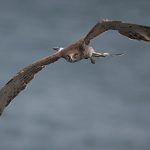
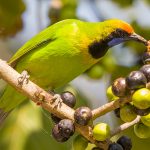
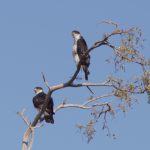
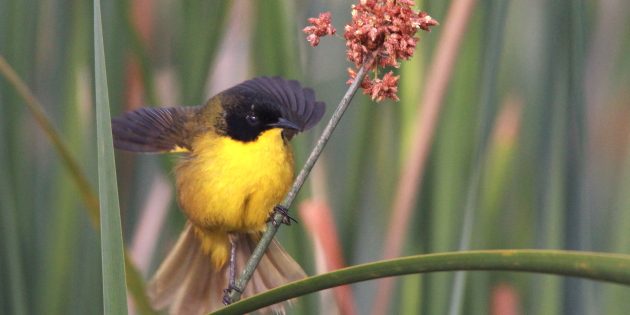
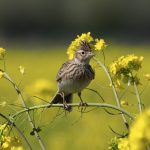
I really, really want to become a bird watcher. I have absolutely no knowledge of them except that they hang in the air effortlessly. What is a good book for a new avian enthusiast?
We don’t all hang in the air effortlessly, Addie. For some of us it’s quite a lot of work. 😉
In all seriousness, though, visiting this site is a good start. I’d also suggest looking for a local bird club or Audubon chapter that hosts regular bird walks.
A very interesting blog that keeps me glued.Your amazing informative insight on how to start bird watching is helpful in persuading non nature enthusiasts to start being aware of their natural resources.We run bird tours in Soweto and would like to have more locals using our services to protect our environment through environmental education progams in schools and offer alternative career choices for young people ultimately a life long hobby coupled with storytelling on environmental issues using indegenous knowledge systems.Thank you for your insight.
Good advice. I agree that it is important to start the bird watching off with the right foot and make the first experience as memorable as possible. This will keep your motivation high and paves the way for a hobby of lifetime.